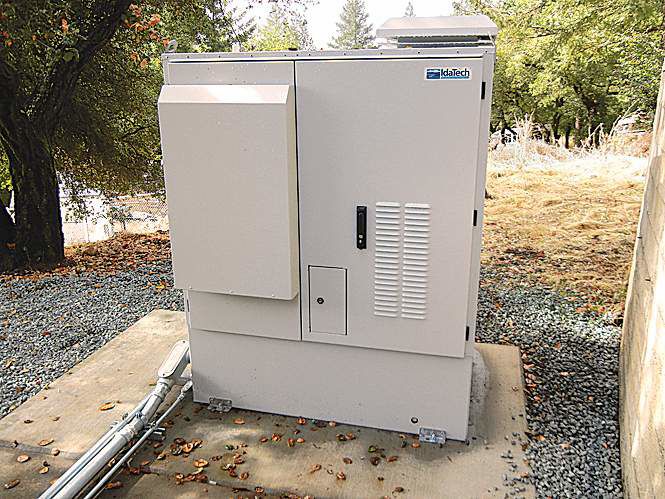IdaTech makes clean energy cleaner
Published 4:00 am Monday, November 7, 2011

- T-Mobile installed this IdaTech fuel cell last month in Northern California. The fuel cell, powered by Bio-HydroPlus renewable fuel, qualifies for some incentives.
Electricity-generating fuel cells have always been considered green technology, but Bend-based IdaTech has taken them a shade further, recently introducing a renewable fuel to power its products.
Last month, T-Mobile installed an IdaTech fuel cell in Northern California powered by Bio-HydroPlus, fuel made from biomethanol and deionized water.
Trending
“Officials attending the installation witnessed the first use of Bio-HydroPlus in the state of California and saw the backup power fuel cell quietly start up and deliver 5,000 watts of clean power while operating on renewable fuel,” according to a news release from the company headquartered on Northeast 18th Street.
As a renewable fuel, Bio-HydroPlus qualifies for some government incentives, IdaTech said, effectively lowering the cost of fuel cells and making them more competitive with traditional backup power systems, such as those powered by diesel.
And IdaTech believes it will also help fuel its growth.
Fuel cells have long held the promise of providing abundant clean energy and helping end the nation’s dependence on oil, according to the federal government. But the devices themselves, which produce electricity using hydrogen and oxygen, are not new. Sir William Grove developed the first fuel cell in England in 1839, according to the U.S. Defense Department’s Fuel Cell Test and Evaluation Center.
Today, they serve as a replacement for batteries or other power-generating systems, such as those fueled by gasoline or diesel.
IdaTech has concentrated on providing backup power to the telecommunications industry. For example, its fuel cells generate electricity to cell sites built in areas that face severe weather, natural disasters or unreliable electrical grids.
Trending
The company, which has about 90 employees, has conducted research in other areas too. It recently demonstrated that its fuel cells could be integrated into off-road vehicles, according to the U.S. Department of Energy’s 2009 annual progress report. Testing took place at River’s Edge Golf Course and around the High Desert Museum, according to the document.
IdaTech is also developing a liquid-petroleum gas fuel cell, which it expects to bring to market next year.
Fuel cells generate few emissions, if any, according to the Energy Department. They also operate more efficiently and quietly than other methods. Historically, however, hydrogen fuel cells cost more than other methods.
Moving cylinders of hydrogen around can be difficult, and many municipalities strictly regulate hydrogen use, requiring permits and large open spaces surrounding the equipment, according to an IdaTech briefing document.
IdaTech, along with other companies and the federal government, has worked to reduce the cost of fuel cells over the years, and some of the results of IdaTech’s efforts — the ElectraGen ME, a fuel cell that creates hydrogen gas on-site by mixing methanol and water — began shipping in December.
The U.S. Department of Energy called it unique in its latest market report, released in June. It requires about 20 times less surrounding space than hydrogen-fueled devices, the company says, and must meet fewer regulations.
IdaTech, which was founded in 1996, expects the fuel cell to help lead it to profitable growth, CEO Hal Koyama said in the company’s 2010 annual report.
While the methanol mix made IdaTech’s ElectraGen ME more cost competitive, the addition of Bio-HydroPlus makes it more environmentally friendly.
Compared to regular methanol, biomethanol reduces carbon emissions by 78 percent, according to BioMCN, the first company to produce high-quality biomethanol in industrial quantities.
The company, based in the Netherlands, has patented a technique for turning crude glycerin, a byproduct of biodiesel production, into biomethanol, according to its website.
To finish its fuel, IdaTech turned to Brenntag Pacific, a company based in Santa Fe Springs, Calif. The company blends the biomethanol with deionized water to IdaTech’s specifications to make Bio-HydroPlus, which powers the IdaTech fuel cell T-Mobile installed.
“Fuel cells have always provided clean energy,” IdaTech said in a news release last month. “And now they can be powered by renewable fuel, creating a sustainable power solution.”








